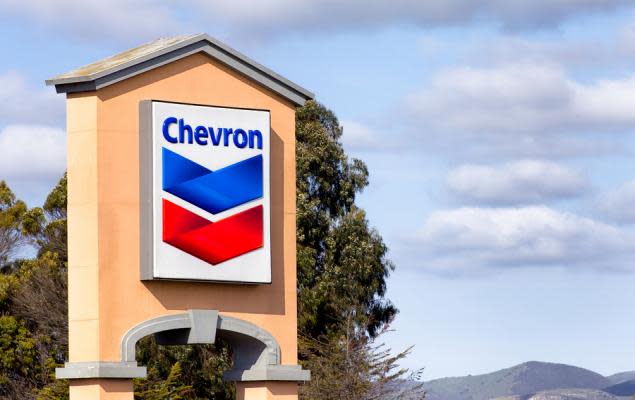Chevron's (CVX) Rig-to-Reef Strategy Receives Green Backlash

Chevron Corporation CVX, the American energy giant, has outlined a plan for decommissioning oil platforms off the Pilbara Coast in Western Australia that has received approval from the state government. Chevron plans to decommission the infrastructure by creating artificial reefs out of the platforms. The American oil giant owns nine platforms around Thevenard Island, offshore Western Australia. The company has not extracted any oil from these platforms since 2014. However, the plan has earned much scrutiny from environmentalists and unions.
Out of the nine platforms, eight will be recycled, with five remaining intact and the other three being temporarily removed before being reinstated at the site. The ninth platform will be removed and repurposed onshore.
Chevron has received the green signal from the federal government and RecFishWest, the regional fishing unit, regarding this plan. A Chevron spokesperson stated that the company will take full responsibility for the decommissioning of the infrastructure and has agreed to return it to the government at the promised end stage. Chevron, along with the government and RecFishWest, argue that the plan is ecologically safe and should reap benefits for the local marine ecosystem.
This plan has, however, not been taken well by environmental groups. A national environmental group highlighted that Chevron is, in fact, evading its responsibilities while retreating from the region. The Wilderness Society environmental group has expressed dissatisfaction with Chevron’s “rig to reef” plan, questioning the appropriateness of using oil and gas infrastructure as a replacement to marine ecosystems. It has also challenged Chevron’s claims about the plan being ecologically safe by raising concerns about the risk of heavy metals and chemicals leaking from these platforms, which could further cause damage to the environment.
A campaigner from the Wilderness Society group stated that Chevron’s plan to avoid rig removal and let it become part of the ecosystem stems down to the fact that the decommissioning of the infrastructure is costly. The federal government has projected that an industry concerning the removal of oil and gas rigs from Australian waters can turn into a $60 billion industry over the next 30 to 50 years.
The aforementioned plan has also earned the criticism of Offshore Alliance, the union representing workers on oil and gas platforms. According to a union representative Doug Heath, leaving the infrastructure at Thevenard Island would mean job cuts for workers, who might otherwise work for the set-up's full removal. As such, the union also criticised the government for approving Chevron’s plan and cutting out other stakeholders in the process. Heath also stated that the government’s approach toward decommissioning would leave a negative impact on the decommissioning industry as a whole, if the workers’ jobs are taken away in such a manner.
Chevron Australia has mentioned that it maintains a planned approach to decommissioning, emphasizing that its utmost priority lies with the safety of both people and the environment. However, environmentalists fear that letting Chevron move ahead with this plan may set a poor precedent for other decommissioning projects across Western Australia.
Zacks Rank and Key Picks
Currently, CVX carries a Zacks Rank #3 (Hold).
Some better-ranked stocks in the energy sector are Archrock Inc. AROC, SM Energy SM and Hess Midstream Partners LP HESM. Archrock and SM Energy presently sport a Zacks Rank #1 (Strong Buy), while Hess Midstream carries a Zacks Rank of #2 (Buy). You can see the complete list of today’s Zacks #1 Rank stocks here.
Archrock is an energy infrastructure company based in the United States, with a focus on midstream natural gas compression. It provides natural gas contract compression services and generates stable fee-based revenues.
SM Energy is an upstream energy firm operating in the prolific Midland Basin region and the South Texas region. For 2024, the company expects its production to increase from the prior-year reported figure, signaling a bright production outlook.
Hess Midstream owns, operates, develops and acquires a wide range of midstream assets, providing services to Hess Corporation and other third-party customers. The partnership has a stable fee-based revenue model secured via long-term commercial contracts. Since Hess Midstream operates through 100% fee-based contracts, it is exposed to minimal commodity price risks.
Want the latest recommendations from Zacks Investment Research? Today, you can download 7 Best Stocks for the Next 30 Days. Click to get this free report
Chevron Corporation (CVX) : Free Stock Analysis Report
SM Energy Company (SM) : Free Stock Analysis Report
Archrock, Inc. (AROC) : Free Stock Analysis Report
Hess Midstream Partners LP (HESM) : Free Stock Analysis Report

 Yahoo Finance
Yahoo Finance 